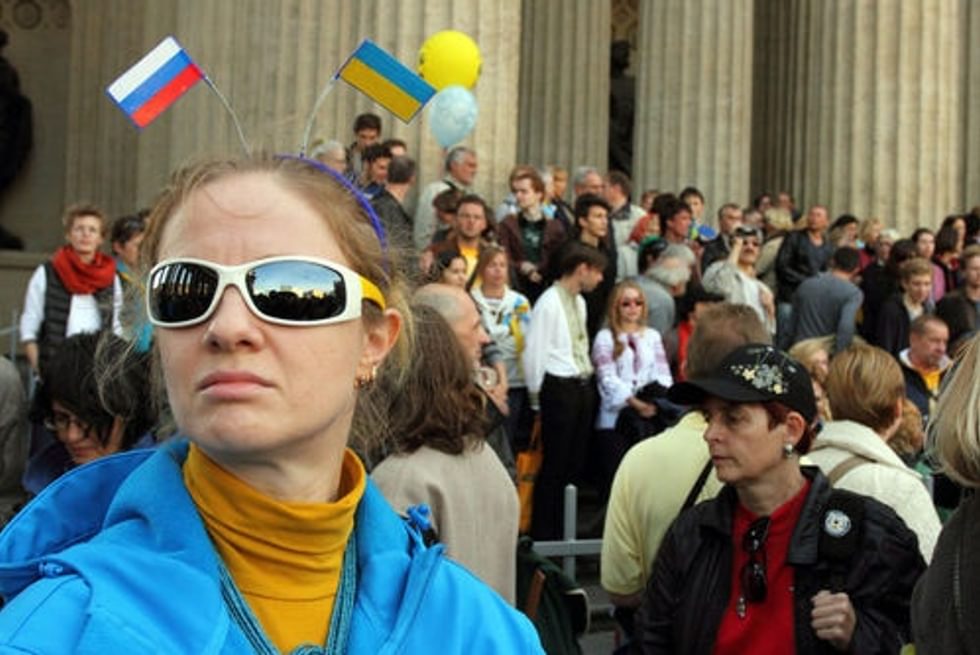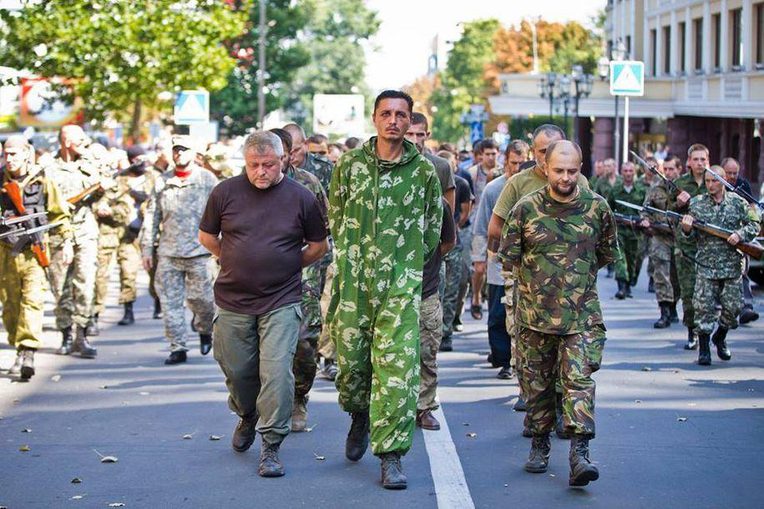How History Goes Wrong: Historical Politics and its Outcomes
From the Series: Ukraine and Russia: The Agency of War
From the Series: Ukraine and Russia: The Agency of War


Combatants from Eastern Ukraine call their enemy “fascists.” They put signs on their tanks: “To Kiev!,” “To Lviv!”—echoing historical examples of the Red Army slogan “To Berlin!” On August, 24 2014 the insurgents organized a “parade” in Donetsk showing prisoners of war marching through one of central streets—obviously imitating Stalin’s “parade” of German POWs in Moscow in 1944. Obviously, these facts could be interpreted as manipulative technologies used by behind-the-screen spin-doctors. However, it is no less evident that a considerable portion of the combatants and their supporters in Eastern Ukraine sincerely believe that they fight against “fascists” while their opponents believe that they fight for the true Ukraine.
War in Eastern Ukraine (called an anti-terrorist operation) officially started in April 2014. The war in peoples’ minds, which now seems to be an integral (and natural) part of the current military and civic conflict started much earlier—when the past became an important element of the present.
Since the end of the 1980s, Ukraine has followed a classical scenario of use and misuse of history in nation building. Since 1987, history has served as a major tool of condemnation of the ruling Communist party as well as of legitimation of the claims of the opposition. After 1991, the history of Ukraine (together with Ukrainian literature) became a central element in the civil education of younger generations (in both school and higher education curricula). A standard set of commemorative practices, historical symbols, and lieux de memoire were established, created, and set up in the 1990s to ensure homogeneity in the realm of national identity.
However, implementation of this classical scenario was complicated by important systemic factors. Nation builders decided to appeal to the standard scheme of national history designed by the father of the Ukrainian master-narrative—Mykhailo Hrushevski—at the end of 19th century. In Soviet times, this scheme was forbidden. Therefore, in independent Ukraine, it immediately earned the status of being a spring of “true history.” In this scheme “the nation” was congruent to “the people,” i.e., ethnic Ukrainians. This “little crack in the lute” has spoiled the tune from the very beginning—the 19th century project, quite antiquarian in its essence, had to be implemented under dramatically different cultural and political circumstances: in independent, multicultural Ukraine where historical regions had different cultural and political legacies, memories, and visions of the past and the present.
This normative vision of history, imposed by a “nationalizing state” (to recall Rogers Brubaker’s term), and aimed at the consolidation of the nation, started to work against itself. Ethnic exclusivity left too little space for the other nationalities that have inhabited Ukraine for centuries (Jews, Poles, Russians, Crimean Tatars). In many cases, the othering reached a level of xenophobia and cultural branding. Professional historians and public figures have raised concerns about the possible social outcomes of this kind of history since the end of the 1990s; however, they have been either ignored or mocked by power holders, as well as by some of the statist nation builders from the public sector. Top power holders preferred to keep an ambivalent politics, giving consent to different, sometimes mutually exclusive versions of the past.
In the meantime, this scheme of history became an object of instrumentalist use and abuse by political opponents of the “nationalizing state” and its cultural elites. First, orthodox Communists have done their best to represent the excesses of “nationalized history” as the wrongdoings of “evil nationalists” (the major trend in the 1990s). Since the beginning of the 2000s, when the Communists started to lose their influence, another political force took charge of the exploitation of history for political needs: the Party of Regions.
Like the Communists, they also addressed their appeals to those segments of the population of Ukraine that en masse can be seen as bearers of Soviet patrimonial instincts and nostalgia, carefully fostered by local elites. These populations are predominantly in the east of Ukraine and Crimea and to some extent in southern Ukraine.
These regions have not only become the social base and kind of feudal domain for the Party of Regions, they have also served as a milieu for the cultivation of Soviet symbolism and mythology (like the Great Patriotic War, a Lenin and in some cases Stalin cult)—in other words, of the Soviet version of historical mythology. This variant of the past was deliberately opposed to “national history,” whether for brainwashing or for the instrumental use and abuse of history for political needs (defamation of political opponents, deflection of attention from urgent social problems, etc.). As a result, a huge segment of the population remained under the influence of a quasi-Soviet historical mythology that complemented the Soviet-style patrimonialism cherished by both local landlords and their clients. Moreover, this version of the past has become an element of street politics—since 2005, physical clashes between supporters of nationalized history and its pro-Soviet version have become routine.
The effect was enhanced by another powerful actor—Russia—whose media dominated eastern Ukrainian informational space and did their best to propagate renewed Soviet-style historical mythology, which included a renewed cult of Stalin (as an “effective manager”) and the myth of a Great Victory over fascism. In 2007, the top Russian leadership, diplomatic institutions, and media launched a massive informational campaign against “nationalism” in Ukraine, which focused almost exclusively on issues of history—state politics under Yushchenko was presented as a feast of nationalism and anti-Russian propaganda. Part of this campaign was devoted to the intensive reproduction of the Soviet cliché about Ukrainian nationalists as Nazi collaborators. From their side, proponents of the radical version of national history in Ukraine exerted every effort to produce their version of the past, glorifying persons with debatable pasts like Stepan Bandera—whose name in eastern Ukraine has served as a synonym for “fascism” since Soviet times.
In the end, two mutually exclusive versions of the past have been cultivated, exaggerated, and manipulated by politicians, and two “virtualized realities,” two sets of simulacra, have formed a basis for a very real conflict whose cost now is being measured by human lives. Obviously, conflict over history is part of a bigger picture, which includes social, economical, socio-psychological and many other components. This is exactly a case of how history can go wrong—in every possible sense.